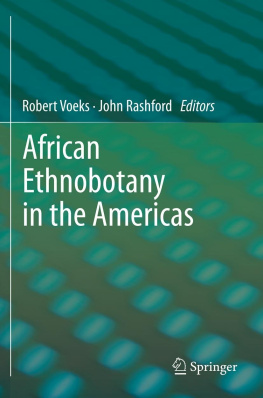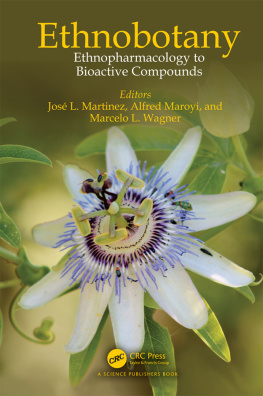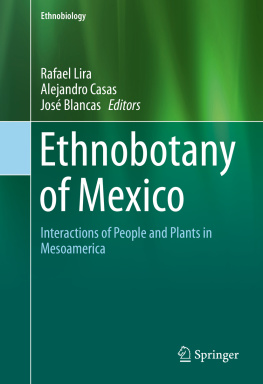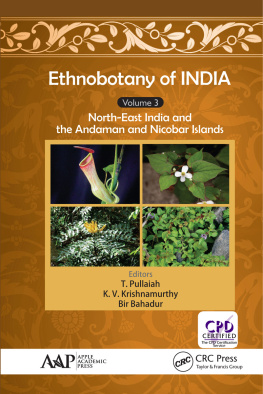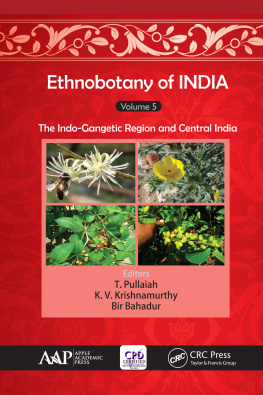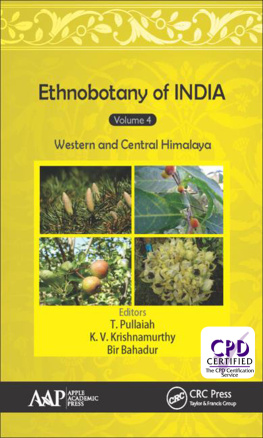Robert Voeks and John Rashford (eds.) African Ethnobotany in the Americas 2013 10.1007/978-1-4614-0836-9_1 Springer Science+Business Media New York 2013
1. Introduction
This collection explores the ethnobotany of the African diaspora. Drawing on papers presented at the 50th Annual Society for Economic Botany Meeting Symposium African Ethnobotany in the Americas, held in 2009 in Charleston, South Carolina, as well as contributions by other leading scholars on the subject, it explores the complex relationship between plant use and meaning, historical and current, among African-descended populations in North America, the Caribbean, and South America. A number of sophisticated studies have been carried out that support Herskovits pioneering research on the African heritage of the Americas, but with several notable exceptions the reader will encounter in this volume, they have largely overlooked the importance of plants in African cultures and in the African diaspora. This collection is offered as a small contribution to filling this gap. It presents various aspects of the botanical legacy of Africans who played a significant part in the making of the modern world (Thornton ).
Rooted in European colonial expansion, the field of economic botany, the forebear of currently ethnobotany, has a rich historical and scientific tradition. Indeed, the objectives of the colonial enterprise were as much about the quest for green gold as it was for precious metals and sources of labor. Newly encountered useful speciescinchona, guiacum, vanilla, jalapa, and myriad othersas well as novel discoveries regarding the biogeography and utility of long sought-after medicinal spices and flavorings, cinnamon, black pepper, nutmeg, and turmeric, to list a few, enriched the purses of private entrepreneurs and the coffers of colonial powers (Barrera ).
As the scholarly offspring of economic botany, ethnobotany has a briefer and less exploitive pedigree. Dominated in its infancy by descriptive work and lengthy inventories of useful plants, ethnobotanical research focuses increasingly on problem solving and hypothesis testing by means of qualitative and increasingly quantitative methods (Voeks ).
Because the primary objective of ethnobotanical research has long been focused on unearthing new species and their novel uses, the lions share of inquiry has been carried out with indigenous people, the perceived custodians of useful plant knowledge. Whether stated or implied, received wisdom suggests that mature ethnobotanical knowledge is space and time contingent, that is, it is the outcome of long-term occupation and gradual cognitive familiarity with the floristic environment. Ethnobotanical narratives frequently allude to the antiquity and continuity of knowledge profiles among indigenous people, and native people are often romantically idealized as repositories of ancient plant wisdom, handed down unchanged as sacred oral text from generation to generation. The primary role of ethnobotanists, in this view, is to salvage this calcified forest wisdom, for the good of the community and of western science in general, before it succumbs to the forces of globalization and cultural erosion. Conversely, the botanical knowledge retained by diaspora communities, whose territorial occupancy is often measured in mere decades or centuries, has until recently been viewed as shallow, degenerative, and unworthy of academic research. Immigrants, it is assumed, simply have not acquired enough knowledge about the local flora to be of much scientific interest. (but see Alexiades ).
But this conceptual interpretation of the nature-society interface implies a degree of temporal and spatial emplacement of human populations and useful plant species that is strikingly inconsistent with the record. It hinges on the notion that indigenous societies have been geographically stable throughout much of their history, which is clearly wrong in almost every instance, and follows, according to Alexiades ().
Nowhere are these untested and unsupported biocultural assumptions more strikingly apparent than the limited ethnobiological inquiry conducted with African-descended populations in the Americas. Over the course of three and a half centuries, 11 million or more Africans were uprooted from their homeland, transported under appalling conditions across the Atlantic, and distributed as chattel slaves throughout the New World and elsewhere (Eltis and Richardson ). Confronted with the challenges of living and working under conditions of racialized economic exploitation, Africans at first glance seem poorly situated to have introduced their rich agricultural and ethnobotanical traditions or to have assimilated the indigenous names and properties of these alien forests and fields and croplands. The native peoples, languages, and religions were different; the crops and cropping systems were different; and, most importantly in this context, the extant floras were different. Two thousand miles of ocean and 100 million years of biological diversification separated Africans from their known landscape. Moreover, given racist ideologies rationalizing racially based economic exploitation, Africa has long been stereotyped as an intellectual backwater, lacking in the innovative powers and creative energies evidenced by their tropical Asian and American counterparts. Accordingly, considering both the monumental barriers to ethnobotanical diffusion and assimilation, and the likely preconceptions of researchers, it is not surprising that the ethnobotany of African diaspora communities has largely been overlooked in favor of indigenous groups.
Objectives and Overview
Ethnobotany is a profoundly interdisciplinary subject, and accordingly, contributors to this volume are drawn from a variety of disciplines, including agronomy, anthropology, botany, chemistry, environmental science, geography, history, and political science, and employ a range of methodologies, including ethnobotany and ethnography, ecological sampling, archival research, phytochemistry, and geospatial techniques. Voucher specimens were collected and stored in local and international herbaria, except in the case of religiously or legally protected species. Each contribution was peer-reviewed by the editors and by at least one additional specialist (the efforts of which the editors gratefully acknowledge). Note also that in contrast to the use of African in the restricted sense of the first generation of Africans brought to the New World, the term will be used here in the widest sense, allowing us to keep in focus the continent and its diverse peoples and their descendant populations in the Americas.

